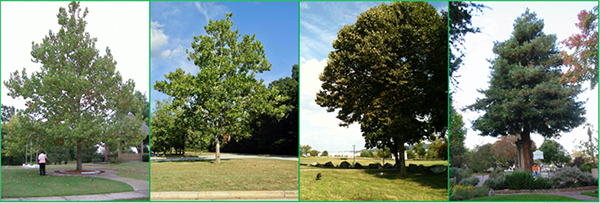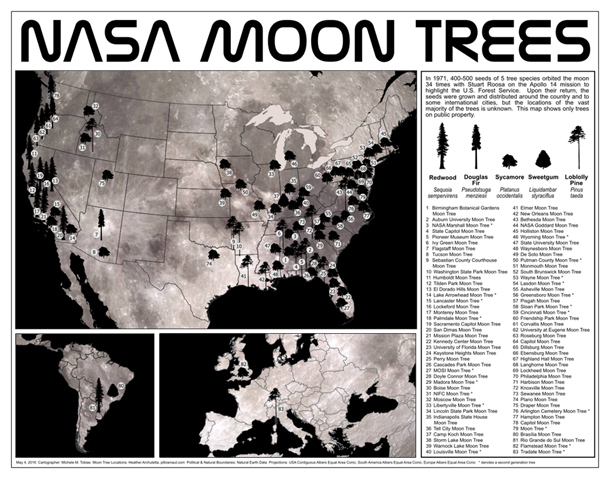News - GLOBE Observer
What in the World Are Moon Trees?
Trees connect us scientifically, environmentally, and culturally. We all know that trees are vital to our planet’s health. As trees grow, they absorb carbon from the atmosphere, playing a vital role in Earth’s global carbon cycle and helping to regulate Earth’s carbon budget.
But before you read any further, look around, especially if you are outside. I bet most of you can look in any direction and see a tree. You might wonder about a few things like: “What type of tree is that?” or “Why is that tree so tall or short?” or “How old is that tree?” or even “Was that tree planted by someone or did the wind blow a seed to where the tree is now standing?” Or how about if you look around and don’t see any trees? What does that signify about the environment? Why aren’t there trees? All of these are great questions, and are ones that can help us understand the local environment where the tree is growing, or not.
Have you ever heard of “Moon Trees?”
Technically, the trees called “Moon Trees” have never been to the Moon, but the 500 seeds that grew the trees were taken into lunar orbit. The NASA Moon Trees Historical Website states:
“Apollo 14 launched in the late afternoon of January 31, 1971 on what was to be our third trip to the lunar surface. Five days later Alan Shepard and Edgar Mitchell walked on the Moon while Stuart Roosa, a former U.S. Forest Service smoke jumper, orbited above in the command module. Packed in small containers in Roosa's personal kit were hundreds of tree seeds, part of a joint NASA/USFS project. Upon return to Earth, the seeds were germinated by the Forest Service. Known as the "Moon Trees", the resulting seedlings were planted throughout the United States (often as part of the nation's bicentennial in 1976) and the world. They stand as a tribute to astronaut Roosa and the Apollo program.”

Among the 80 thriving Moon Trees around the world, the trees are mostly sycamores, Loblolly pines, redwoods, sweetgums, and Douglas firs. So, where can you find these unique Moon Trees? You can check out several websites, including the NASA Moon Trees Historical Website listed above and a wonderful article and photographs from our friends at National Geographic. Perhaps you can see some Moon Trees in person and even take tree height observations of them using the NASA GLOBE Observer app’s trees tool. When completing your tree observation, let us know in the comments within the app tool that the tree you just measured is one of the famous Moon Trees. You can also learn more about the trees from our colleagues at Marshall Space Flight Center. Check out the map below, created by UC Davis data scientist, Dr. Michele M. Tobias.

Image Credit: Dr. Michele M. Tobias
Even though it is unlikely the Moon Tree seeds were changed much by their brief lunar orbit, it's amazing they made it into space and that many of the trees are still growing and flourishing today around the world.
The almost magical idea of “Moon Trees” is a fun and unique opportunity to be inspired by both trees and the wonders of space and science.
Brian Campbell (NASA Wallops/GST) is a NASA Senior Earth Science Outreach Specialist at the NASA Goddard Space Flight Center’s Wallops Flight Facility in Wallops Island, Virginia USA. Brian is also the Trees Around the GLOBE Student Research Campaign Lead and the Trees Science Lead for the NASA GLOBE Observer citizen science program. Brian works with local to international students in over fifty countries.
Comments
View more GLOBE Observer news here.








